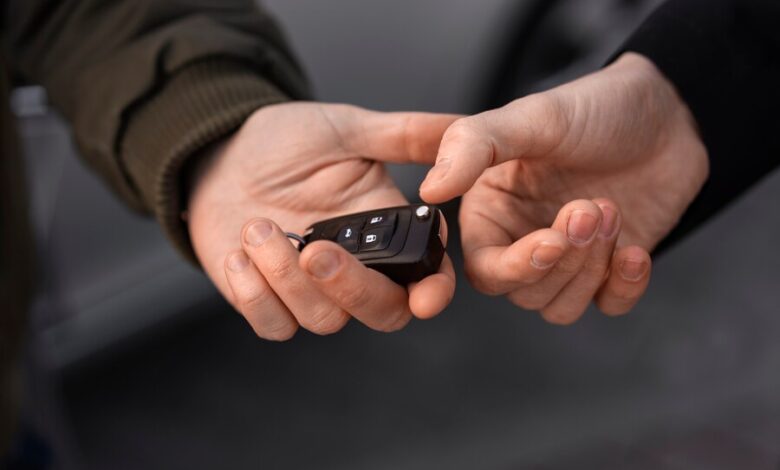How to use swdr to find missing keyfob: A Comprehensive Guide

Losing a keyfob can be quite a hassle, especially when you’re in a hurry. With smart technology becoming a part of everyday life, it’s no surprise that there’s now a solution to help you locate your lost items quickly. One of the latest tools for this purpose is SWDR, a device that combines sophisticated technology with ease of use to help you find lost items like keyfobs. In this guide, we’ll dive deep into how SWDR works, how to set it up, and why it’s so effective. Whether it’s a car keyfob or a smart key, this guide covers all you need to know.
What is SWDR?
SWDR, short for Signal Wave Detection Radar, is a tracking tool that operates on radio frequency and radar technology, allowing it to detect and pinpoint the location of objects within a specified range. Unlike Bluetooth or GPS, SWDR is designed to work without a direct pairing and doesn’t rely on internet connectivity, making it highly versatile for tracking smaller items like keyfobs.
Applications of SWDR Technology
Originally developed for security and tracking in industrial and research settings, SWDR is now accessible to the average consumer for everyday use. Its signal detection capabilities make it an ideal solution for tracking various personal items, from keys to phones, and even smaller electronics.
How Does SWDR Work?
Understanding the science behind SWDR makes it easier to use effectively. SWDR devices emit radio signals that bounce off objects. When these signals are disrupted by a specific object, the SWDR interprets this as a detectable item within its range.
- Signal Emission: SWDR releases radio waves in all directions.
- Signal Disruption Detection: These signals encounter and interact with objects, which is then detected by the SWDR receiver.
- Location Interpretation: The receiver interprets the disrupted signals to calculate the item’s location, usually displaying the distance and direction of the object on the SWDR interface.
This process helps users locate items quickly and accurately, even in crowded or cluttered environments.
Benefits of Using SWDR for Finding a Keyfob
SWDR provides several unique advantages over other tracking methods. Here’s why SWDR is worth considering for keyfob recovery:
- High Precision: SWDR’s signal radar capability allows for pinpoint accuracy.
- No Dependence on Batteries in the Tracked Object: Unlike Bluetooth or GPS tags, SWDR does not require the keyfob to have its own power source.
- Works in Indoor and Outdoor Settings: SWDR signals penetrate most obstacles, so it can work in garages, homes, or outdoor spaces effectively.
Is SWDR Reliable?
SWDR has proven to be a reliable tool, especially when used correctly. Here’s what you need to consider about its reliability:
- Signal Range: SWDR works effectively within a range of approximately 30 meters (varies by model).
- Battery Life: Ensure that the SWDR device itself is fully charged, as battery power influences detection accuracy.
- Environmental Factors: Extreme weather or thick concrete walls may limit SWDR’s range slightly, although it generally performs well in most conditions.
Preparing to Use SWDR for Keyfob Tracking
Before starting, you’ll want to gather a few essentials:
- SWDR Device: Ensure your SWDR is functional and has a full charge.
- User Manual: This is crucial for understanding your specific model’s features.
- Clear Area (if possible): For the best results, try to move to a clear area with minimal signal interference.
Step-by-Step Guide: How to Use SWDR to Find a Missing Keyfob
Step 1: Power on the SWDR device.
Step 2: Adjust Settings for Optimal Detection
- Set the SWDR to its “object detection” mode. Some SWDR models have different modes based on item size, so select the option closest to a keyfob.
Step 3: Begin Scanning the Area
- Move slowly around your home or the area where you last saw the keyfob.
- Hold the SWDR at waist level and rotate it in a circular motion to ensure it covers all directions.
Step 4: Pay Attention to Signal Strength
- Most SWDR devices use a beeping sound or a display indicator to show proximity. As you get closer to the keyfob, the signal will intensify.
Step 5: Identify the Exact Location
- When the signal is at its peak, you’re likely within a meter or two of the keyfob. Search carefully in that area to locate it.
Troubleshooting Common Issues
If you’re having trouble locating your keyfob with SWDR, consider these solutions:
- Weak Signal Detection: This might be due to low battery levels. Recharge the SWDR and try again.
- Interference from Nearby Electronics: Turn off or move away from other electronic devices to reduce signal interference.
- Device Malfunction: Restarting or recalibrating your SWDR can sometimes resolve issues. Consult your user manual for specifics.
Alternative Methods for Finding a Keyfob
If SWDR doesn’t work for some reason, you might consider other tracking options:
- Bluetooth Trackers: Many small Bluetooth trackers can attach to a keyfob, providing tracking via a mobile app.
- GPS Trackers: GPS is reliable for longer distances but can be less effective indoors.
Precautions When Using SWDR
When using SWDR, keep the following precautions in mind:
- Avoid Interfering with Other Signals: SWDR emits signals that can sometimes interfere with Wi-Fi or Bluetooth. Use it at a reasonable distance from other devices.
- Consider Privacy and Security: Some SWDR signals may be detectable by high-grade receivers, so avoid using it in highly sensitive areas if security is a concern.
Case Studies of SWDR Success in Finding Keyfobs
Many users report successfully locating their keyfobs and other small items using SWDR. In one case, a car owner was able to find her keyfob hidden in the cushions of her sofa after it slipped out unnoticed. SWDR provided a clear signal, even though the keyfob was surrounded by dense fabric.
How SWDR Compares to GPS and Bluetooth Tracking
- GPS Tracking: GPS is excellent for tracking items over long distances but is not practical for small-scale indoor use.
- Bluetooth Tracking: Bluetooth is effective indoors but has a limited range, usually around 10-15 meters. SWDR bridges the gap by offering medium-range tracking with high precision.
Maintaining and Storing Your SWDR Device
To ensure that your SWDR device remains functional for as long as possible:
- Charge Regularly: Avoid letting the battery drain completely between uses.
- Store in a Cool, Dry Place: Humidity or extreme temperatures can damage internal components.
- Clean Carefully: Use a soft cloth to clean the device’s surface, and avoid water or abrasive cleaners.
FAQs on Using SWDR for Keyfob Tracking
- What is SWDR, and how does it work for finding a keyfob? SWDR uses signal wave detection to locate small objects by emitting radio waves that reflect off nearby items.
- Is SWDR more reliable than Bluetooth tracking? Yes, SWDR often provides greater accuracy and doesn’t require the object to have its own power source.
- What should I do if SWDR isn’t picking up my keyfob’s location? Check for possible interference, and ensure the SWDR is charged and functioning correctly.
- Can I use SWDR to track other lost items besides keyfobs? Absolutely! SWDR can be used for a variety of small items, including phones, wallets, and other personal items.
- Does using SWDR have any privacy concerns? SWDR emits signals, so consider privacy if using it in shared or public spaces.
- How accurate is SWDR compared to GPS tracking? SWDR is highly accurate within a 30-meter range, making it ideal for smaller, close-range searches.
Conclusion
Using SWDR to find a missing keyfob can save time and reduce stress. With its advanced signal detection and user-friendly operation, SWDR offers a solid solution for anyone prone to misplacing small items. Its reliability and precision make it a valuable addition to your daily tools, ensuring you never lose your keys for long.
Also Read: Retirementworkshop.info/mgrosshamptonpa | Best Guide



